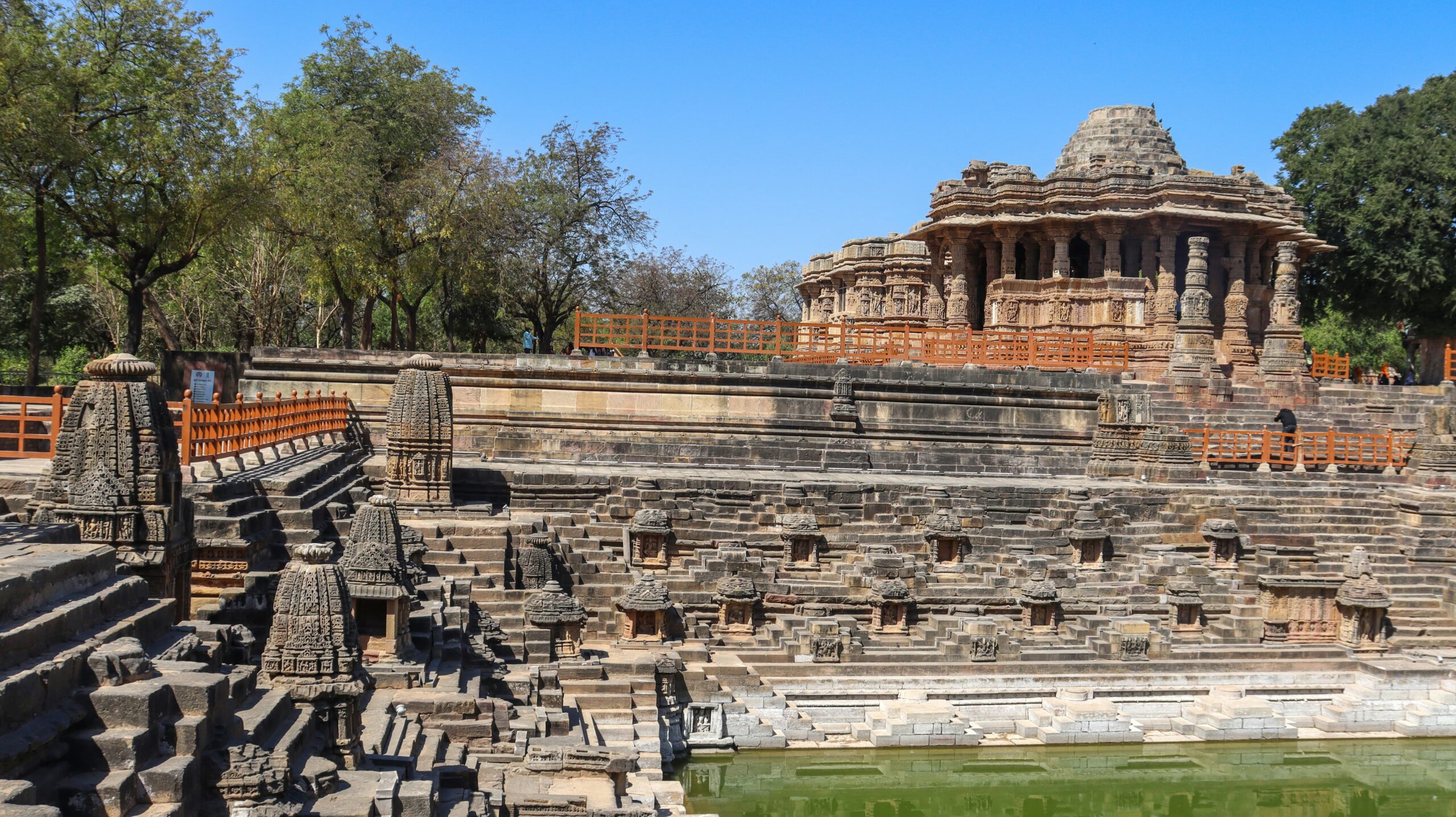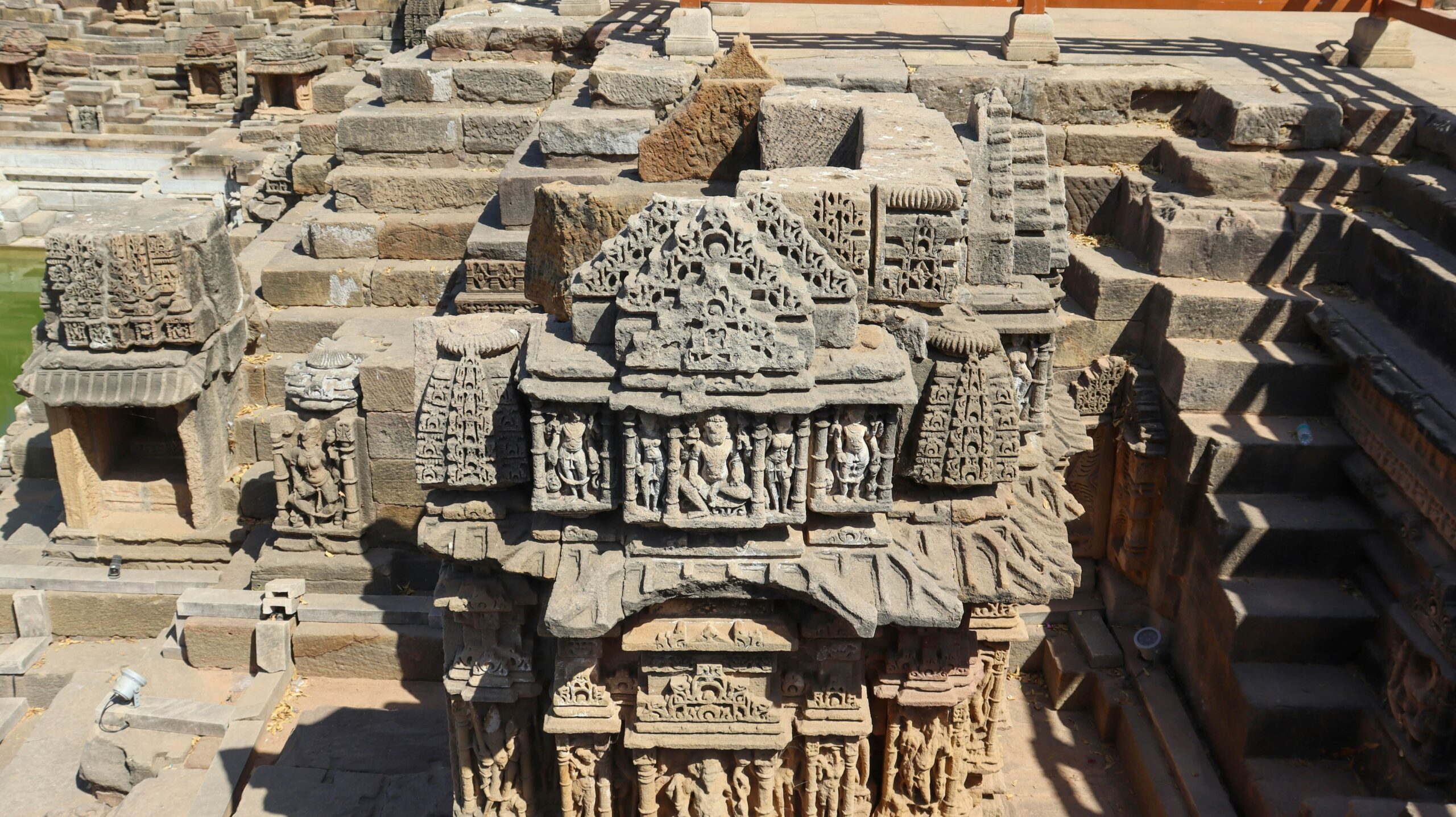The Modhera Sun Temple stands as one of the most remarkable expressions of devotion and architectural mastery in western India. Located in the Mehsana district of Gujarat, this eleventh-century temple dedicated to Surya, the Sun God, invites travellers into a world shaped by precision, astronomy, stonework, artistry, and an unchanging sense of time. A visit here presents a chance to observe how the movement of the sun interacts with sacred space, particularly during sunrise on specific days of the year when light travels across the temple in a straight path towards the garbhagriha. This interplay between sunlight and structure continues to captivate historians, architects, and cultural travellers who journey to Modhera throughout the year.
The sun alignment at Modhera is not an event of spectacle but a measured interaction between nature and design. On equinox mornings, the first rays fall directly into the central shrine. The effect is serene rather than theatrical. Visitors who arrive at daybreak during these periods can watch the first light travel directly into the inner shrine, exactly as intended by the original builders.
Before entering the main temple, travellers are greeted by the magnificent Modhera Stepwell, known as the Surya Kund. This vast geometrical water tank is bordered by one hundred and eight shrines dedicated to various deities. The steps descend in a widening pattern, forming a series of terraces that lead visitors toward the water. This stepwell is not only an architectural feature but a ceremonial space that once marked the beginning of the temple journey. Pilgrims would perform ritual purification at the kund before ascending towards the inner sanctum. The symmetry and scale of the stepwell show a profound understanding of geometry and spatial composition, drawing visitors into the complexity of the landscape.
The architecture of this temple is extraordinary in its detail and proportion. The structure is divided into three main sections: the Surya Kund, the Sabha Mandap, and the sanctum. Each part is aligned along an east-west axis, reinforcing the temple’s connection to the sun’s movement.
The Sabha Mandap is supported by intricately carved pillars that depict scenes from the epics, celestial figures, and daily rituals of ancient life. The carvings are remarkably preserved, allowing visitors to study the skill of the artisans who worked with patience and purpose. The sanctum, now without its deity, still carries a peaceful ambience that encourages contemplation. Its placement and orientation allow the solar rays to fall directly upon it on specific mornings, highlighting the astronomical intent behind the design.
Every surface carries narrative elements, reinforcing the temple’s position as one of the finest examples of early medieval temple craft in India. Instead of relying on scale alone, the builders achieved grandeur through precision and meaning.
Among the UNESCO heritage sites in Gujarat, Modhera holds an important place in discussions surrounding preservation and cultural identity. Its architectural integrity, its connection to astronomy, and its historic relevance make it a strong candidate for international recognition. The temple stands in conversation with other heritage sites of the region, such as Rani ki Vav in Patan and the archaeological remains at Lothal. Together, these sites create a broad narrative of Gujarat’s long history of craftsmanship, engineering, and artistic vision.
The Modhera Sun Temple’s history dates back to the reign of King Bhima I of the Chaulukya dynasty in the early eleventh century. Historical accounts and inscriptions from this period point to a thriving era of temple building, maritime activity, and cultural exchange. The temple’s construction reflects the prosperity and intellectual depth of the kingdom, where astronomy, religion, and architecture were closely linked. Although the temple’s deity was removed during later invasions, the structure continues to convey the values and aspirations of the people who built it.
Witnessing the Modhera Sun Temple sunrise is one of the most meaningful ways to experience the site. Visitors who arrive early are able to watch how the first light moves across the stone surfaces, catching carvings with a soft glow before reaching the central position. During equinox mornings, the alignment becomes remarkably precise. Many travellers plan their visit around this time, eager to observe the relationship between celestial movement and sacred architecture.
The temple complex is open throughout the year, with Modhera Sun Temple’s timings typically beginning in the early morning and continuing until sunset. Arriving early is recommended, especially in winter when the light is gentle and the atmosphere around the stepwell and mandap remains calm. Travellers visiting during equinox months should plan well in advance if they wish to wait for sunrise inside the complex.
A visit to Modhera is far more than a tour of an ancient structure. It is an encounter with centuries of human thought, artistry, and mathematical understanding. Walking through the pillars, descending into the stepwell, or standing near the sanctum provides a sense of connection to the mind of the early Indian craftsman.

